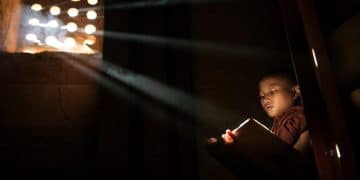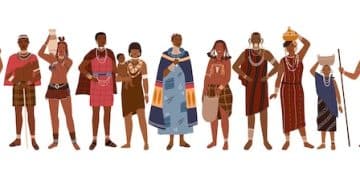Examining the Intersection of Literary Criticism and Cultural Studies in American Literature
Examining the intersection of literary criticism and cultural studies enhances our understanding of American literature by analyzing texts within their socio-historical contexts, revealing power dynamics and cultural values.
American literature is a complex tapestry woven with diverse voices, experiences, and histories. To fully appreciate its richness, it’s crucial to go beyond simply reading the words on the page. **Examining the intersection of literary criticism and cultural studies in the analysis of American literature** provides a powerful lens through which we can understand how social, political, and cultural forces shape literary works and, conversely, how literature influences our understanding of these forces.
Understanding Literary Criticism and Cultural Studies
Literary criticism involves analyzing, interpreting, and evaluating literature. It aims to understand the meaning, significance, and artistic merit of literary works. Different schools of literary criticism offer various approaches to interpreting texts.
Cultural studies, on the other hand, is an interdisciplinary field that examines the ways in which culture is produced, disseminated, and consumed. It explores the relationship between culture and power, focusing on issues such as identity, ideology, and social inequality.
Key Approaches in Literary Criticism
- Formalism: Focuses on the intrinsic features of the text, such as language, structure, and imagery, without considering external factors.
- New Criticism: Emphasizes close reading and textual analysis, seeking objective interpretations based solely on the text itself.
- Psychoanalytic Criticism: Applies Freudian and other psychoanalytic theories to understand characters’ motivations and unconscious desires.
Core Concepts in Cultural Studies
Cultural studies offers tools to analyze power dynamics and cultural values within literary texts. Applying these concepts allows for a deeper, more nuanced understanding of American literature.
- Ideology: The system of beliefs, values, and ideas that shape our understanding of the world.
- Hegemony: The dominant ideology that maintains power by consent rather than force.
- Representation: How social groups and cultural phenomena are portrayed in literature and other cultural forms.

By understanding these approaches and concepts, we can begin *examining the intersection of literary criticism and cultural studies in the analysis of American literature* more effectively, gaining deeper insights into the texts and their cultural contexts.
The Historical Context of American Literary Criticism
The evolution of literary criticism in America has been shaped by intellectual movements and social changes. Understanding this historical context is crucial for appreciating the various critical approaches that have been applied to American literature.
From the early emphasis on moral and aesthetic values to the rise of New Criticism and the later emergence of cultural studies, the field has undergone significant transformations.
Early American Literary Criticism
Focused primarily on moral and didactic concerns. Critics often evaluated literature based on its ability to promote virtue and religious values.
The Rise of New Criticism
Emerged in the mid-20th century as a reaction against historical and biographical approaches. It emphasized close reading and textual analysis, seeking objective interpretations based solely on the text itself.
The Influence of Cultural Studies
Cultural Studies broadened the scope of literary analysis to include social, political, and cultural contexts. Concepts like ideology, power, and identity became central to literary interpretation.
The historical development of literary criticism in America reflects the changing intellectual landscape and the increasing awareness of the complex relationship between literature and culture. This historical perspective forms a vital component when **examining the intersection of literary criticism and cultural studies in the analysis of American literature**.
Applying Cultural Studies to Classic American Literature
By applying cultural studies perspectives to canonical works, we can unearth hidden meanings, challenge traditional interpretations, and gain a richer understanding of the social and political contexts in which these works were created. Let’s consider some examples.
Analysing classics with a cultural studies lens often reveals new meanings and challenges old assumptions.
The Scarlet Letter by Nathaniel Hawthorne
Analyzing **_The Scarlet Letter_** through a cultural studies lens might reveal the Puritan society’s patriarchal structures and its treatment of female sexuality.
Adventures of Huckleberry Finn by Mark Twain
Examining **_Adventures of Huckleberry Finn_** through a cultural studies lens opens avenues to discuss issues of race, slavery, and American identity.
- Analyze the portrayal of Jim and its implications for understanding racial stereotypes.
- Discuss the novel’s critique of Southern society and its complicity in slavery.
- Examine the novel’s exploration of freedom and its limitations within the context of 19th-century America.
Cultural studies allows us a critical perspective, enriching our understanding of the text and enabling discussions about social issues, power structures, and historical contexts.
Contemporary Approaches: Intersectionality and Beyond
Contemporary literary criticism increasingly embraces intersectionality, recognizing that identities are shaped by multiple, overlapping social categories such as race, gender, class, and sexuality. This approach allows for a more nuanced understanding of literary works and their engagement with social justice issues.
Newer approaches enhance our ability to understand the social, cultural, and political dimensions of literature.
Intersectionality in Literary Analysis
Intersectionality provides a framework for understanding how different forms of discrimination and oppression intersect and interact.
Queer Theory and American Literature
Queer theory challenges heteronormative assumptions and explores the representation of LGBTQ+ identities and experiences in literature.
Postcolonialism and American Literature
Postcolonial perspectives examine the legacy of colonialism and imperialism in American literature, focusing on issues of power, representation, and cultural identity. These provide useful tools for **examining the intersection of literary criticism and cultural studies in the analysis of American literature**.
By incorporating these contemporary approaches, literary criticism can more effectively address the complex social and political dimensions of American literature, promoting a more inclusive and equitable understanding of literary history and culture.

The Future of Literary and Cultural Analysis
The future of literary criticism and cultural studies promises to be increasingly interdisciplinary and collaborative. As scholars grapple with complex social and political issues, they will likely draw on insights from a wide range of fields, including history, sociology, anthropology, and media studies. Additionally, the rise of digital humanities offers new tools and methodologies for analyzing literary texts and cultural phenomena.
The fields of literary criticism and cultural studies are constantly evolving. These fields are always adapting to new challenges and opportunities.
- Increased Interdisciplinarity: Look for increased collaboration between literary scholars and experts in other fields.
- Digital Humanities: Explores the use of digital tools and methods for literary analysis.
- Global Perspectives: Paying attention to the transnational flows of culture and ideas.
As we move forward, **examining the intersection of literary criticism and cultural studies in the analysis of American literature** will remain essential for understanding the complex relationship between literature, culture, and society. This approach will help us to better understand how literature can both reflect and shape our understanding of the world.
The future holds great promise for the ongoing evolution of these critical disciplines.
| Key Point | Brief Description |
|---|---|
| 🔑 Critical Analysis | Examines literature’s meaning and significance. |
| 🌍 Cultural Context | Analyzes how culture shapes literary works. |
| 💡 Intersectionality | Recognizes overlapping social identities. |
| 📚 Literary Evolution | Highlights shifts in critical approaches. |
Frequently Asked Questions
Literary criticism aims to analyze, interpret, and evaluate American literary works to understand their meaning, significance, and artistic merit. It seeks to provide insights into the text’s themes, structure, and cultural context.
Cultural studies enriches literary analysis by examining the social, political, and cultural contexts in which literary works are produced and consumed. It explores the relationship between literature and power, identity, and ideology.
Examining the intersection of literary criticism and cultural studies provides a more comprehensive understanding of American literature by considering both the intrinsic features of the text and its broader cultural implications. This approach allows for a deeper appreciation of the social and political dimensions of literature.
Key concepts in cultural studies include ideology, hegemony, representation, power, and identity. These concepts are employed to analyze how cultural products, including literature, reflect and shape social relations and cultural values.
Intersectionality enhances literary criticism by recognizing that identities are shaped by multiple, overlapping social categories such as race, gender, class, and sexuality. This approach allows for a more nuanced understanding of literary works and their engagement with social justice issues when **examining the intersection of literary criticism and cultural studies in the analysis of American literature**.
Conclusion
In conclusion, *examining the intersection of literary criticism and cultural studies in the analysis of American literature* offers invaluable insights into the rich tapestry of American literary works. By integrating critical methodologies with cultural awareness, readers gain a deeper understanding of the texts themselves and the societies that produced them.
Ultimately, this interdisciplinary approach enhances our appreciation for the power of literature to reflect, shape, and challenge our understanding of the world. Continue to explore and question, integrating new perspectives for deeper insights!.





